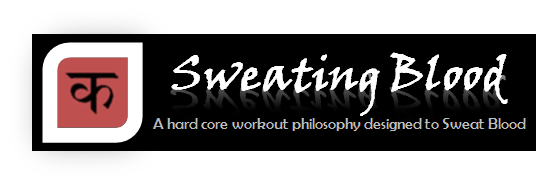|
As you walk forward do so in an explosive, dynamic motion, driving into the belt as you step. You should hear the forces snap the sled with each step. This is much different than just walking forward. This type of dragging is great for the development of the hamstrings and glutes.
Ankle dragging: This movement is great for the hip flexors and hamstrings. To perform it you'll need to attach one nylon strap to the sled and pass a second through the first for a "T" shape. Tie or loop the end of the second strap around each ankle.
Start the motion in a split stance position and pull the back leg forward with a slight bend in the knee. Concentrate on using the hip flexors and abdominals, not the quads. This movement has had a profound difference on many lifters I've consulted. It teaches them how to use their abdominals in a way that's conducive to doing the squat.
Rope dragging behind the knees: This style of dragging will pulverize your hamstrings. Attach the strap to the sled. Run a rope or another nylon strap through the first. Face away from the sled and grip the second strap behind your knees with a close stance. Stay in this semi-squatted position and walk forward.
|
Front raises: This has been one of the best and most successful things I've ever seen for sore and damaged shoulders. It's helped more lifters get back to the bench than any other movement. Attach one strap through the first in the same manner as the ankle dragging. Face away from the sled and grab one strap in each hand and walk forward while simulating a dumbbell front raise with the straps.
|
Rear raises: This movement is performed the same as the front raise except you'll be walking backwards and performing a rear raise. The benefit to these front and rear raises is that the loading during the eccentric phase is taken away. What you're left with is a concentric-only activity that causes little to no soreness.
|
Sample Dragging Workouts
Dragging for restoration — The basic guideline for restoration dragging is to keep the load light and drag for a greater distance. The best distance I've seen for this type of loading is 200 feet. A sample restoration workout is as follows:
1) Around the waist dragging: 90 pounds for 200 feet, rest 30 seconds and return. This movement would be performed for four trips. (One trip equals 200 feet.)
2) Front Raises: Two trips, 200 feet with 35 pounds
3) Rear Raises: Two trips, 200 feet with 35 pounds
4) Ankle dragging: Two trips, 200 feet with 35 pounds
Dragging for strength — The best type of loading for strength is to drag increasingly heavier weights for a shorter distance. The best distance we found for this is 100 feet. A sample strength workout would look like this:
1) Around the waist dragging: Begin with 45 pounds and drag for 100 feet. Rest 30 to 45 seconds and return. Rest another 45 seconds and add another 45-pound plate. Keep with this same distance and continue rest and loading pattern until your body tells you to stop. When it comes to strength dragging, one movement per workout is plenty.
2) Dragging using the empirical rule of 60%: The empirical rule of 60% is one of the best ways to induce active restoration in the course of a micro cycle. The best way to see how this system works is to look at an example of how it's used:
Day 1: Front raise dragging: 100 pounds for two trips of 100 feet.
Day 2: Front raise dragging: 60 pounds for two trips of 100 feet. You'll notice the weight is 60% of the weight used on day one.
Day 3: Front raise dragging: 36 pounds for two trips of 100 feet. This time you'll notice the weight is 60% of the weight used on day two.
These 60% drops are responsible for inducing a means of active restoration. Restoration should be used in cycles throughout the year coupled with the heaviest loading phases. You don't want to make restoration measures part of a yearly cycle because it's important for the body to get sore and beat down at certain times throughout the year. This is part of the training process we all accepted a long time ago. You do, however, want to go into a meet as fresh as possible.






1 comment:
good article, a few extra things in there to try.
Post a Comment